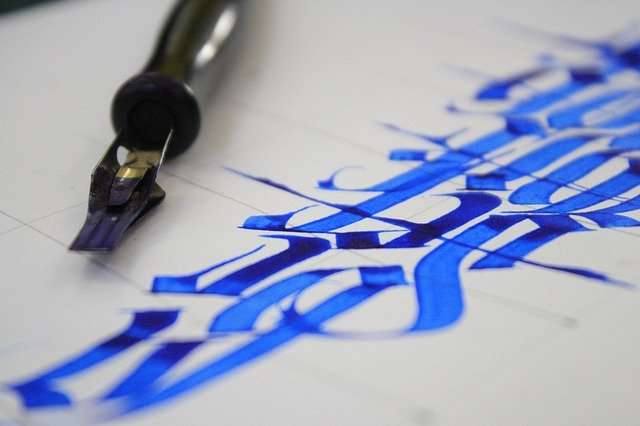Hobby Art Work is a blog created to share what I learn and how to improve my art. It will be focused on traditional painting but also on digital art and photography.
I am a self-taught artist, I’m not part of any school or group, so I decided to create this blog to show my artwork and share tips that I find useful. By doing this, there will be no limitation for the type of art that I will post here, it can be painting, photography, digital or others.
This blog will intend to be informative for any artist, beginner or professional so that you can find different ways to improve your work and have a better understanding of what makes an image stand out.
**I’ll not only talk about art but also about other things that are connected with creativity in general; psychology, philosophy, marketing and also about my own journey in the world of art.**”
I´m an artist (sculpture and digital art) and I do this blog to share some of my work, tutorials, 3d models, tips and tricks among other things, in addition to document all the costs related to my art (materials, transportation, etc).
Trying to do it as detailed as possible so that others can learn from my experience.
There is no schedule for publishing posts.
You can also find me on:
Patreon page: https://www.patreon.com/brianjameswilson
Facebook page: https://www.facebook.com/hobbyartwork/
Instagram profile: https://www.instagram.com/brianjameswilson/
Website: http://brianjameswilson.net/
Websites can be very useful in helping you to expand your hobby art projects. There are many websites that offer tips and advice on how to pursue your hobby or passion. With so much information available, you can feel overwhelmed at times. Your hobby website should allow you to discover more about the specific mediums you enjoy, whether it be photography, painting, modeling or any other type of artwork.
The Internet is a powerful tool that has allowed people to connect with others who share the same interests and hobbies. You can read reviews of products and compare prices from various online stores. You will also have links to other sites that offer additional information about your specific hobby.
It’s easy for anyone to set up a website for their interest or hobby. If you’re not sure where to start, the best place is probably with a blog website.**
Hobby art is a word that I have invented to describe something that is pervasive in all of us. We have a compulsion to make things, whether they are useful or not, and whether they are good or not. Hobby art has its origins in the arts and crafts movement of the early 20th century, which encouraged people to make things for themselves instead of buying them.
Toys and furniture were made for children by parents and grandparents. In the 21st century, parents and grandparents are busy with careers, so we buy most of our toys and furniture. But if you look around your house, you will see a lot of hobby art that was not purchased: knickknacks, framed photographs, candles on the fireplace mantel, kitchen gadgets hanging from hooks. In my case, my wife complains about all the clothes I’ve sewn for our boys (likewise all over my house).
The defining characteristic of hobby art is that it is made by the maker primarily for his own satisfaction.* The maker isn’t thinking about how to please his audience or create a new genre: he just makes something because it expresses an idea he cares about. You could argue that this characteristic applies even to fine artists who make paintings to hang on other people’s walls: they aren
Hobby art is what you do for fun. It’s not a job, and it’s not for money.
People who can draw or paint or write or sing or dance are lucky, because they are so often able to turn that skill into a job. But most people can’t, and if you’re one of them, you still have to figure out what to do with your time when you’re not earning money.
The question is important because if it isn’t hobby art, it will be something else: watching TV, going to the mall, looking at Facebook…something that will make you unhappy. If there were nothing else on earth to do besides work and sleep, I could imagine getting by on four hours of sleep a night. But there is a lot else to do besides work and sleep. And if you don’t find something to do besides work and sleep in your off hours, then you will be miserable in your spare time.
If it’s not hobby art, what will it be? It’s not an accident that most of the people who watch more TV than they should also have more weight than they should. And I think the reason why so many people have more weight than they should is not just because of the calories. It’s also
Hobby art is a form of art that is done for enjoyment and not for profit. The work is done for the artist’s own satisfaction and is not created to be shown or sold to others. This type of art was once considered inferior to fine arts and even today, some people do not take it seriously. However, more recently, hobby art has gained more respect and is also recognized as a type of art by many.
Though this kind of art may not be considered as valuable as fine arts, they are just as creative and unique. Some hobby artists have their works displayed in galleries while some create their own websites where they show off their work to the world. Hobby art may not be valued as much but it can still be described as an individualized form that can never be duplicated by another person.
The idea of hobbies and hobbies as a creative outlet are so common that it can be hard to remember there is nothing normal about them. A hobby is something done for the sake of enjoyment, not for profit or advancement. The word comes from “hobbyhorse,” a child’s toy that was ridden by hanging on with your teeth. In its original sense, a hobby is an absurdity, something you do because you enjoy it but which makes no sense to anyone else.
Taken to an extreme, one’s own enjoyment becomes all that matters. A hobby can become an obsession; people who have denied themselves basic comforts in order to save money for their next sailing trip or bicycle trip are not uncommon. Another form of obsession is taking up new hobbies one after another rather than sticking with one and making real progress in it.
As a creative outlet, the idea of hobbies has some big limits. The most obvious limit is that besides enjoying them, there is no requirement that hobbies be any good. And yet many people treat their hobbies seriously as outlets for creativity; they share their work with others and take criticism well or badly depending on their mood and what the criticism is about.
There are two main reasons why hobbies often feel like real work even though they are not being


